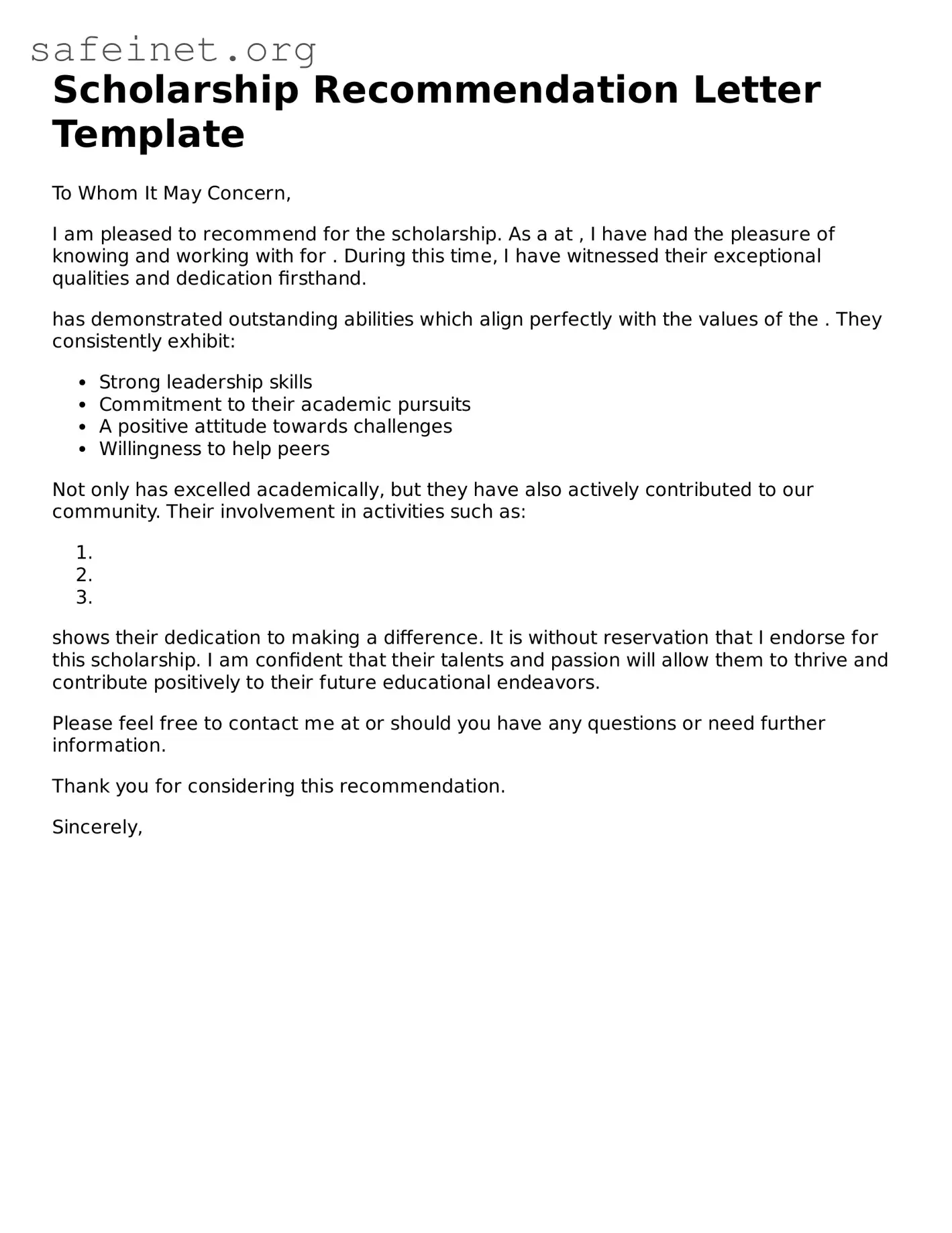What is the purpose of the Scholarship Recommendation Letter?
The Scholarship Recommendation Letter serves to provide insight into a candidate's character, achievements, and potential. It allows individuals who know the applicant well, like teachers or employers, to highlight their skills and experiences. This letter can significantly influence the scholarship committee's decision-making process.
Who can write a recommendation letter?
Typically, a recommendation letter should be written by someone who has a close and positive relationship with the applicant. Ideal writers include teachers, school counselors, employers, or community leaders. Their perspective on the candidate’s abilities, work ethic, and personal growth is invaluable.
What information should be included in the letter?
The recommendation letter should include details about the applicant’s qualifications, strengths, and relevant experiences. Writers should provide specific examples of the applicant’s achievements, their contributions to the community, and any personal traits that make them stand out. It is important to connect these attributes to the scholarship's goals.
Is there a specific format for the letter?
While there is no mandatory format, the letter should be professional and clearly address the scholarship committee. Including the date, the writer's contact information, and a formal greeting is recommended. The content should be structured logically, starting with an introduction, followed by details supporting the candidate, and concluding with a strong endorsement.
How long should the recommendation letter be?
Generally, a recommendation letter should be one page in length. This allows the writer to provide enough detail about the applicant while maintaining the committee's attention. Clarity and conciseness are key, so focus on the most relevant and impactful information.
When is the deadline for submitting the recommendation letter?
Deadlines vary by scholarship program. Applicants should check the specific scholarship requirements to determine when the recommendation letter must be submitted. It is advisable for writers to complete the letter well in advance of the deadline to allow for any unforeseen circumstances.
Can multiple recommendation letters be submitted for one application?
Some scholarship programs allow for multiple recommendation letters, while others may specify that only one is permitted. It is important for applicants to review the scholarship guidelines carefully. If multiple letters are allowed, they should come from different perspectives to provide a well-rounded view of the applicant.
